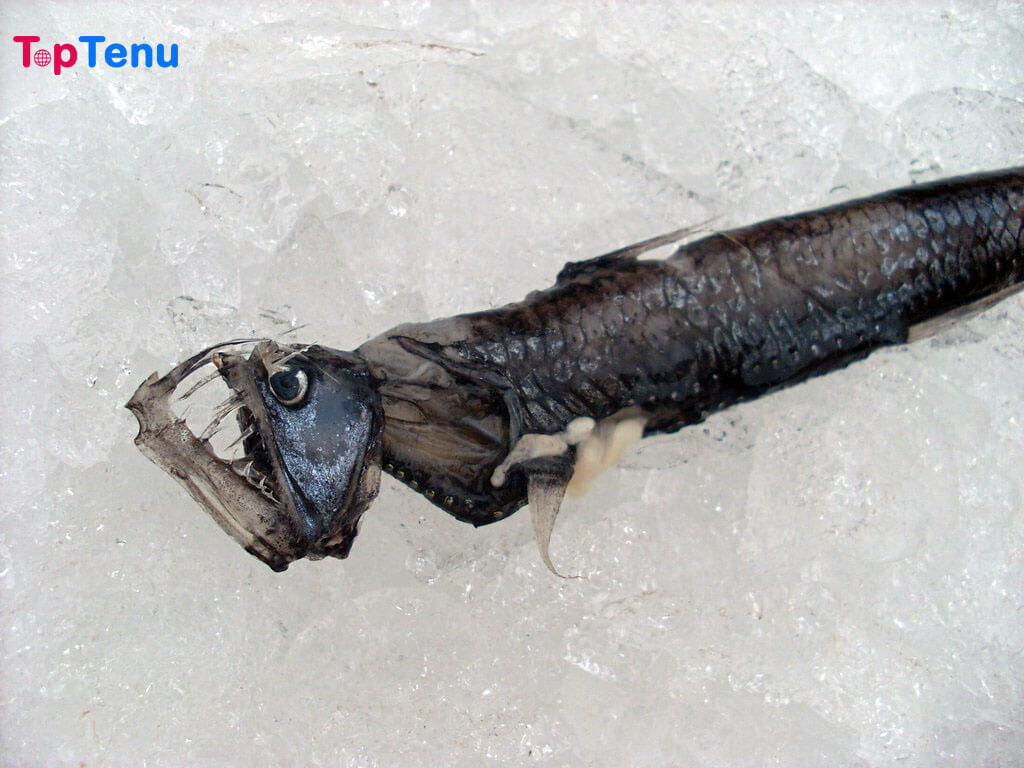1. Nurse Shark
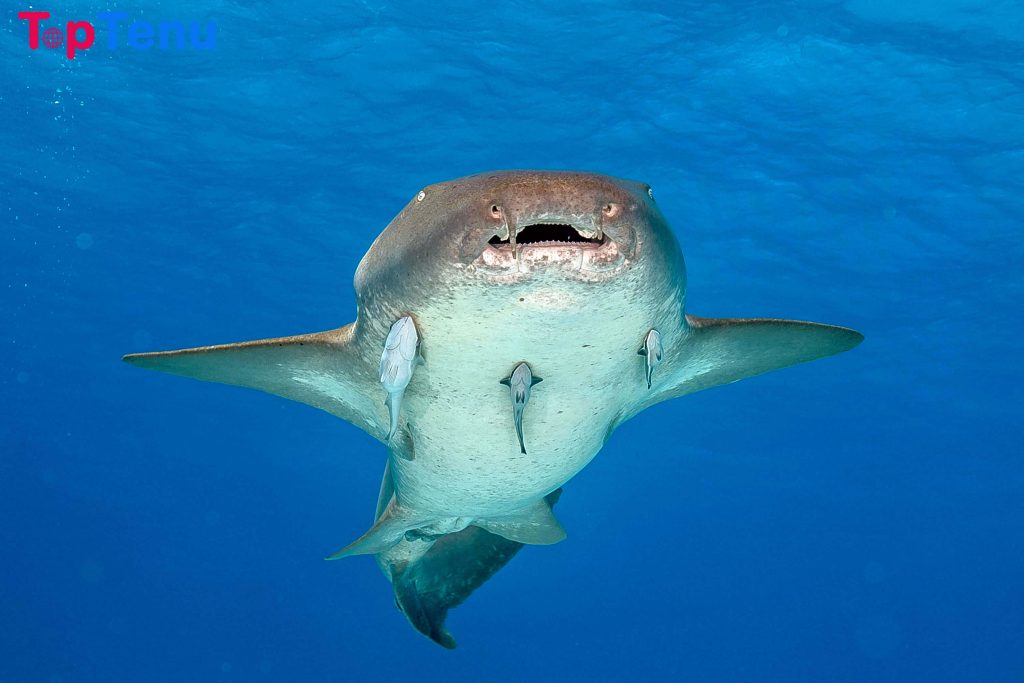
Nurse Sharks have an undeserved reputation for being docile, but these nocturnal hunters can and will attack people. 9 attacks have been attributed to Nurse Sharks, who tend to live in the shallows of the Atlantic and Pacific ocean and react…strongly… to perceived threats.
Nurse Sharks can also get pretty big, with some of them reaching 15 feet long, or the length of your average SUV. When they sink their teeth into you, their mouths act like powerful vacuums, sucking in and latching on so hard that many victims need surgical intervention.
Many people think that Nurse Sharks are docile, so much that they’ve developed a reputation as the sweethearts of the shallow seas, but cold hard facts prove that these animals are true sharks through and through, and like any big beast of the water, are best left alone.
2. Requiem Shark
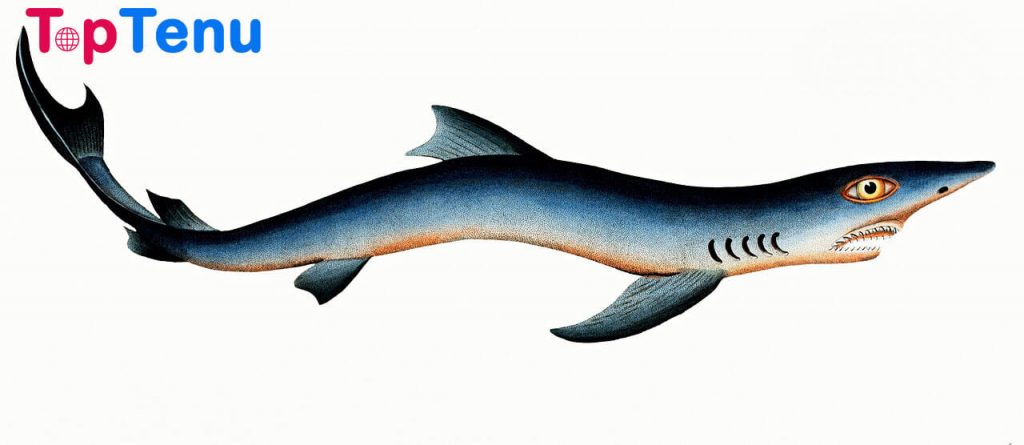
Requiem Sharks’ morbid name matches their lethal nature, and this obscure breed of shark is especially dangerous to spearfishermen. While spearfishermen catch their prey, it gives off vibrations that attract Requiem Sharks, who then vie with the unfortunate fishers for their catch.
Requiem Sharks are uniquely attuned to vibrations, and their senses are evolutionarily poised to allow them to find prey in a vast patch of ocean. Although, like most sharks, Requiems don’t specifically seek out humans, they will not hesitate to fight for fish, and since they tend to travel in packs, this can be a huge problem.
Requiems are strong and torpedo-shaped, and have attacked humans 56 times, with 7 of those attacks being unprovoked. You know that you’ve pissed off a Requiem when they start gnashing their sharp teeth and thrashing around in the water, and you have only seconds to get away before you become chum! Requiem Sharks can extend up to 24 feet in length, or nearly the span of two Volkswagen Beetles end to end, so the chances that you’ll swim away from an encounter unharmed are next to nil.
3. Shortfin Mako Shark

Although the Shortfin Mako Shark is only responsible for 9 unprovoked recorded attacks on humans, these lighting-quick sharks pose a major threat to fishers all over the world. The rub comes with the word “unprovoked”; although fishers don’t necessarily think that they’re intruding upon the short-tempered Shortfin Makos, the sharks themselves often have a different take.
These feisty fish can jump, terrifying fishers and occasionally even gobbling up their catches. Shortfin Mako Sharks aren’t just all brawn and no brains, though; these creatures have the biggest brain-body ratio on the planet and fine-tuned senses that can help them swiftly and accurately zoom in on prey.
Shortfin Makos are rapid swimmers, often bursting through the waves at 45 miles an hour or as fast as your average Greyhound. If you do find yourself in the waters with one of these brainy apex predators, there’s close to zero percent chance that you will outswim, outmaneuver, or outsmart it!
4. Striped Tiger Shark
Striped Tiger Sharks suck down everything in their path; cigarette packs, drums, parts of ships, rocks, and sometimes humans. These garbage cans of the sea are responsible for 131 unprovoked human attacks, and the only thing that matches their voracious appetite is their aggression. Striped Tiger Sharks are notoriously curious, and can be territorial.
They also tend to trawl close to the shore, making them a unique danger to human swimmers. These fearsome predators can stretch up to 16 feet long, or almost as long as a Giraffe is tall. These big brutes are also less likely than other sharks just to take an exploratory nip at a human.
They see anything and everything as a meal, so tangles with Striped Tigers are far more likely to end in death.
Meeting your end by Striped Tiger Shark is more than likely in the top 10 worst ways to die, as these animals have elastic muscles, which allow them to stretch their impressive maws wide to swallow huge chunks of prey. Combine that with their mouthful of razor-sharp teeth, and it’s enough to keep anyone out of the water.
5. Hammerhead Shark
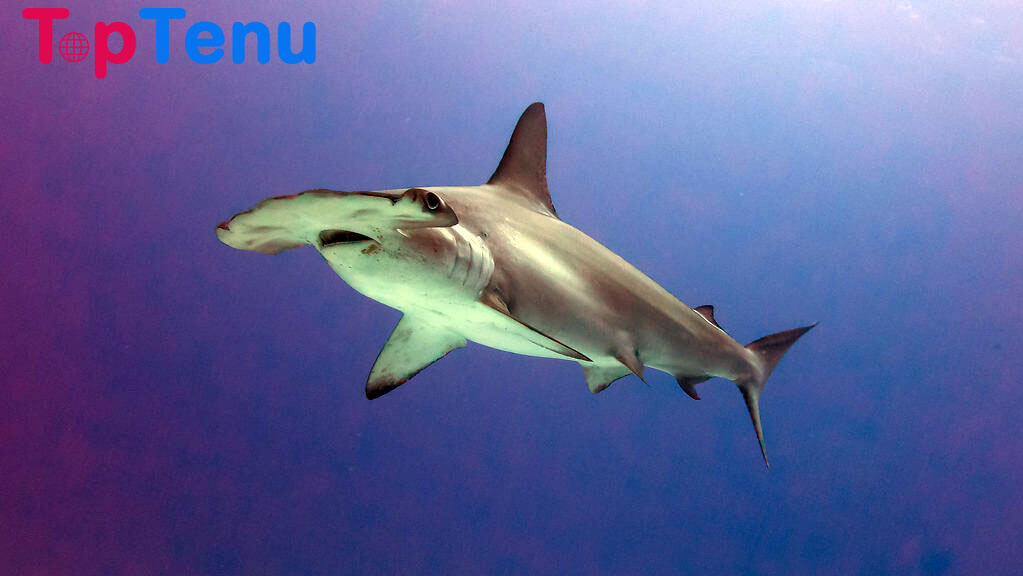
Hammerhead Sharks can stretch up to 20 feet long or the length of a small bus, and their curious bar-shaped heads give them a quirky and almost disarming appearance. Don’t be fooled. Hammerheads are exceptionally aggressive and adept hunters, often swimming in packs.
While some Hammerheads can be downright diminutive, others are massive, and the Great Hammerhead’s famous ferocity makes it very dangerous to humans who wander into its way. Hammerhead Sharks are responsible for 16 attacks, and they usually occur when the animal is trying to protect its territory or compete for a food source.
6. Oceanic Whitetip Shark

Oceanic Whitetip Sharks are open-water assassins, preying on shipwreck victims and hunting in packs. Also called “brown sharks,” these animals don’t move very quickly, but when they hone in on their prey, watch out, because they won’t hesitate to make a meal out of any unfortunate lost at sea.
The most infamous Oceanic Whitetip Shark attack occurred during the Second World War when the U.S.S. Indianapolis sank in the remote Pacific Ocean, and the Whitetips were drawn by the sound of explosions… and possibly… the cries of anguish from her doomed sailors.
According to the lucky survivors, hundreds of seamen were cast beneath the waves and were consumed by swarms of Oceanic Whitetips. Shockingly, Oceanic Whitetip Sharks are only responsible for 15 recorded human attacks, but the crew of the U.S.S. Indianapolis would undoubtedly tell you a different story.
7. Blue Shark
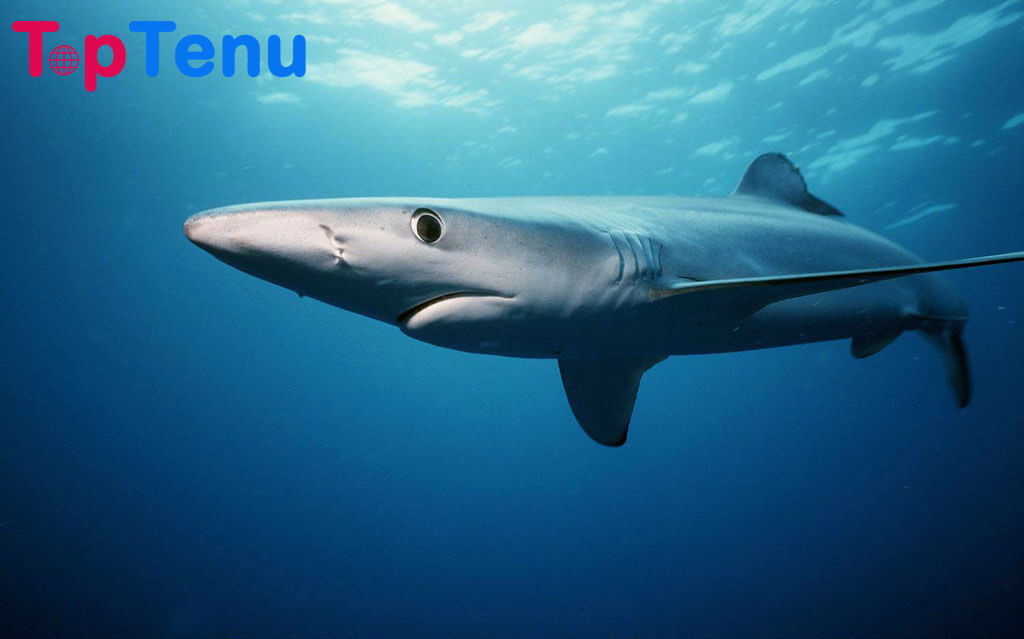
Blue Sharks are open-water predators who love to travel, covering distances of up to 1700 miles, or longer than the distance between New York and Puerto Rico. Although they are only responsible for 32 known attacks on humans, the Blue Shark has a sinister secret.
Unlike other types of sharks, the Blue Shark has something of a taste for human flesh. If you find yourself alone in the open ocean, you might just be on the menu. Blue Sharks are known to sniff out plane crash and shipwreck sites or even attack humans on boats.
This makes them a massive menace, despite their comparably smaller size of 10 feet long. Blue Sharks take pride in terrorizing prey, circling swimmers and divers for up to 15 minutes or more before swimming in fast for the kill.
When they’re not feasting on human flesh, Blue Sharks prefer a tamer diet of octopi and smaller fishes.
8. Blacktip Shark
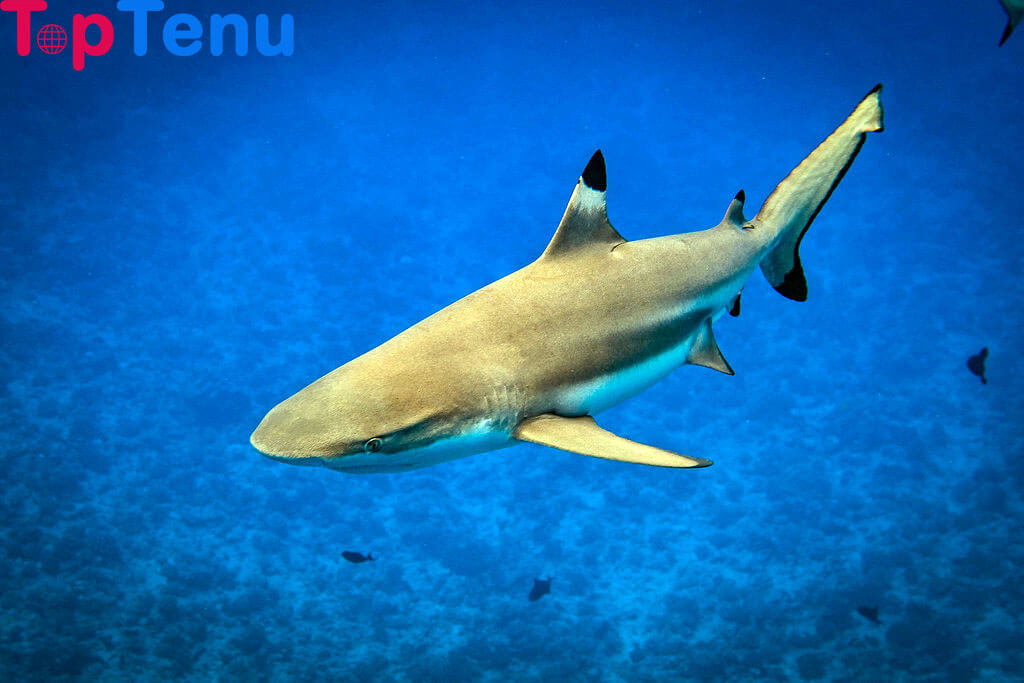
Blacktip Sharks are the bane of Floridan surfers, racking up 29 known attacks in the shallows of the Atlantic and Gulf coasts of the United States.
They can also be found in the Caribbean or South Africa, scooping up surfers out to catch an epic wave. Blacktip Sharks are shallow-water tropical dwellers known for leaping out of the water or mowing down schools of fish. Although these creatures aren’t specifically aggressive, they are curious and can be territorial.
If they feel threatened, or there’s a delicious school of fish nearby, Blacktip Sharks can get extra competitive and show their dominance through a jaw jammed with sharp teeth.
9. Sand Tiger Sharks
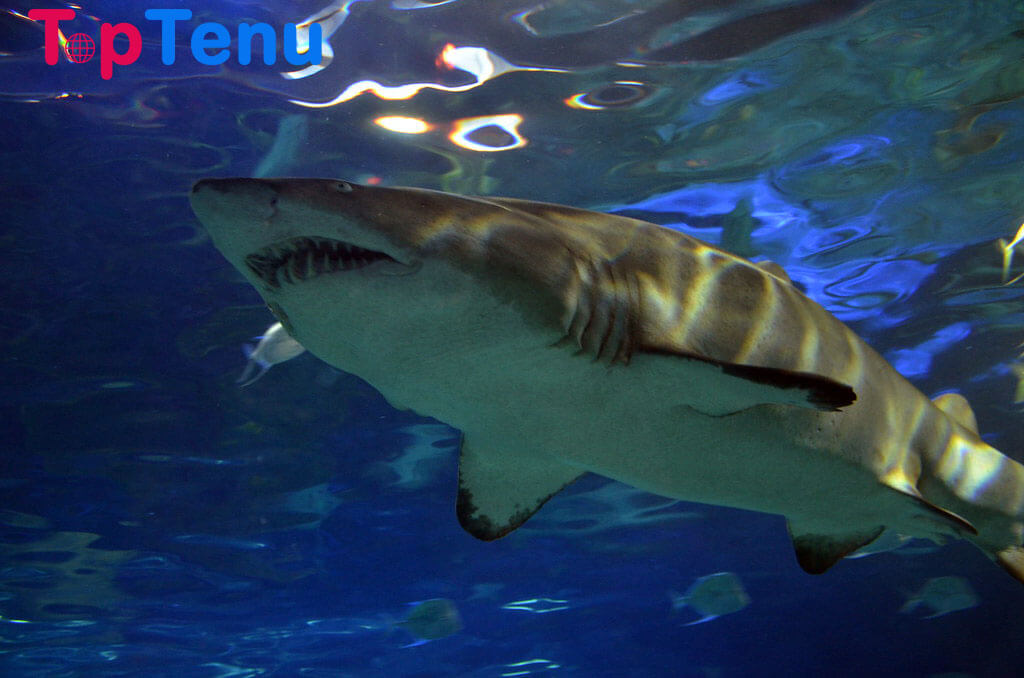
Sand Tiger Sharks are also known as “grey nurse sharks”, but there’s nothing kindly about them. These shallow-water swimmers have attacked at least 29 people on temperate and tropical coasts around the world. Sand Tiger Sharks are mostly active at night, making them a unique threat for night divers and swimmers.
Their muscular frame makes them a formidable oceanic foe, but the real terror comes with their hunting methods. Sand Tiger Sharks are pack hunters who destroy prey by swimming around it in a circle before zooming in for the attack.
Although Sand Tiger Sharks don’t specifically hunt humans, it’s easy enough to get on their bad side, and they won’t hesitate to sink their mouthful of teeth right into your juicy leg.
10. Bull Shark
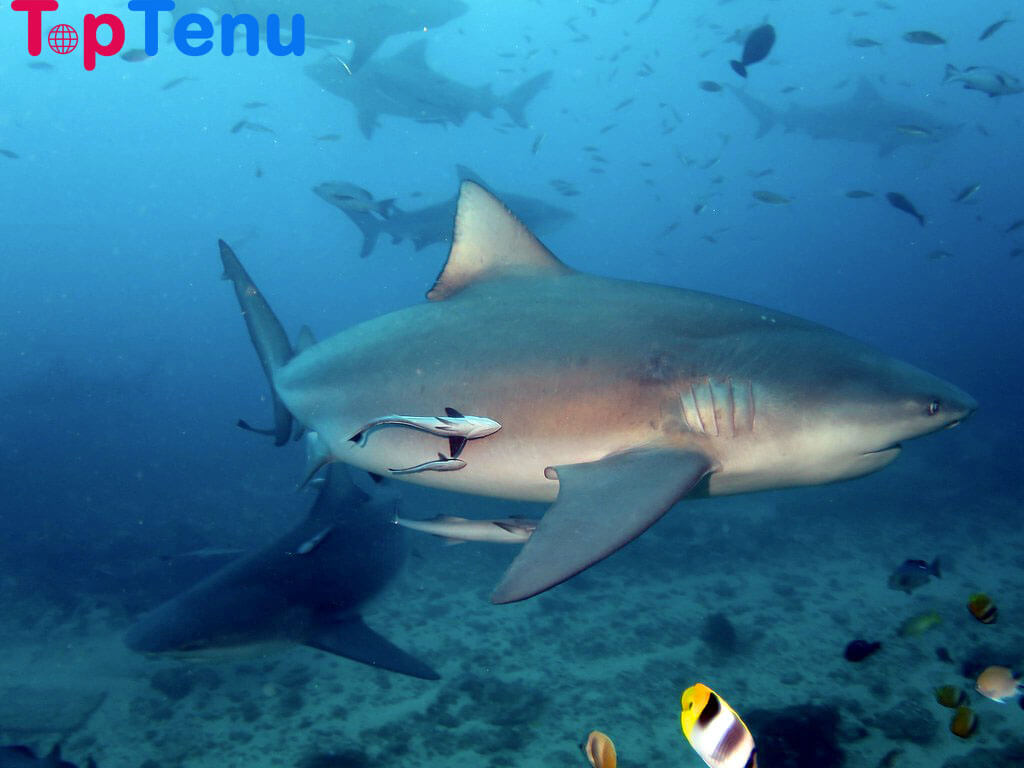
Bull Sharks can survive in both freshwater and saltwater, and they could be coming to a tranquil river near you. These sharks are lethal because of their adaptability and preferred hunting grounds. They lurk in the shallows where most humans like to swim, silently gliding up to them and only making their presence known when it’s far too late.
Bull Sharks live all over the world and have attacked at least 117 people. However, most experts agree that attack numbers are drastically underreported, given the animal’s ferocity and proximity to people. Bull Sharks are unpredictable, hot-tempered, and territorial, and at 11 feet long, or taller than your average room, they are more than a match for most humans.
11. Great White Shark

Great White Sharks are responsible for a staggering 314 unprovoked attacks, and that’s just for starters. This big beast is one of only a handful of descendants of the Megalodon, a terrifying mega-shark that dominated the seas during the Miocene and Pliocene Epochs, and its modern-day ferocity shows that the apple doesn’t fall far from the tree at all.
Great Whites can span up to 21 feet, or half the length of a telephone pole, and propel itself at 40 miles an hour. For reference, Usain Bolt, the fastest man globally, can only sprint at 27.8 miles per hour. In short, run afoul of this oceanic assassin, and you are totally screwed. Great Whites have 300 sharp teeth and the most powerful bite of any animal, on land or sea.
Unfortunately for us puny humans, Great White Sharks love to grapple with us on their turf and are responsible for more unprovoked attacks than any other shark in history.
While some Great Whites may mistake us for seals or marine life, others have been reported to come back for second and third bites, which begs the horrifying question; have they developed a taste for delicious human flesh?
Thanks for Reading! Would you rather fight a Requiem Shark for your catch, or be stranded at sea amongst a pod of Blue Sharks? Let us know in the comments section below.



